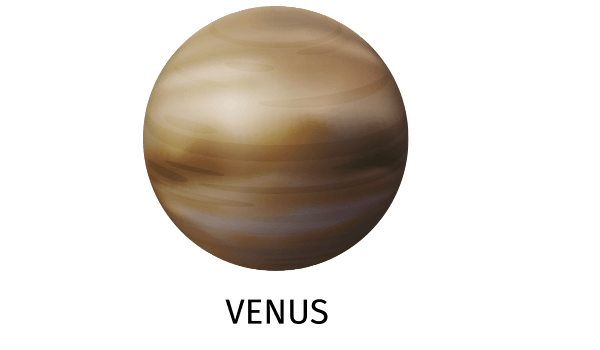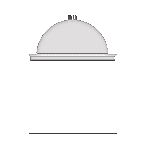Names Of Planets In Solar System | Names of Planets In Order

Willing to know more about the names of planets in the solar system? Well, you are at the right place as here we will provide you with a detailed description of the Planets name in english.
> Solar System

Our solar system is a gravitational-bound system with the sun at its centre. The name planets in the solar system along with their moons periodically revolve around the sun. The solar system order of planets is Mercury, Venus, Earth, Mars, Jupiter, Saturn, Uranus, and Neptune.
> How Many Galaxies Exist In The Universe
The exact number of galaxies in the universe has always been a mystery. However, it is believed that there are over two trillion galaxies that exist within the observable universe. So, it would be quite impossible for us to name all the planets in every galaxy of our Universe.
> The Name Of Our Galaxy & Explanation

Names Of Planets In The Solar System – Correct Order
Here we are with the names of planets in the solar system:
Mercury:

- Order: 1st from the Sun.
- Size and Colors: Mercury is the smallest planet in our solar system (Diameter: 4,879 km). It has a greyish-brown colour.
- Orbit and Distance: The orbit is elliptical. The distance from the Sun is about 57.9 million km.
- Moons: No moons
- Atmosphere and Climate: The atmosphere mainly contains helium. Extreme temperature variations are experienced.
- Fun Facts: It is believed that Mercury is shrinking every day.
Venus:

- Order: 2nd from the Sun.
- Size and Colours: The size of Venus is similar to Earth (Diameter: 12,104 km). It has a yellowish-white surface.
- Orbit and Distance: The orbit is circular. The average distance from the Sun is about 108.2 million km.
- Moons: No moon.
- Atmosphere and Climate: The atmosphere is composed of carbon dioxide, resulting in extremely high temperatures.
- Fun Facts: Venus rotates in a direction opposite to that of other planets.
Earth:

- Order: 3rd from the Sun.
- Size and Colors: Earth is the largest terrestrial planet (Diameter: 12,742 km). Its surface is blue due to the presence of water.
- Orbit and Distance: The orbit is circular and the average distance from the Sun is about 149.6 million km.
- Moons: One moon called “the Moon.”
- Atmosphere and Climate: The atmosphere is composed of nitrogen, oxygen, and traces of other gases. Its climate varies from region to region.
- Fun Facts: Earth is the only planet which is known to support life.
Mars:

- Order: 4th from the Sun.
- Size and Colours: Mars is smaller than the Earth (Diameter: 6,779km). The surface is reddish-brown.
- Orbit and Distance: The orbit is elliptical. The average distance from the Sun is about 227.9 million km.
- Moons: Two moons named “Phobos” and “Deimos.”
- Atmosphere and Climate: The atmosphere is composed of carbon dioxide. The climate is cold.
- Fun Facts: The planet has its name after the Roman god of war.
Jupiter:

- Order: 5th from the Sun.
- Size and Colours: Jupiter is the largest planet in our solar system (Diameter: 139,820 km). The surface has different shades of orange and brown.
- Orbit and Distance: The orbit is elliptical. The average distance from the Sun is about 778.5 million km.
- Moons: 79 known moons.
- Atmosphere and Climate: The atmosphere is composed of hydrogen and helium. It has a turbulent atmosphere.
- Fun fact: Jupiter is so massive that it could fit all the other planets in the solar system inside it.
Saturn:

- Order: 6th from the Sun.
- Size and Colors: Saturn is the second largest planet (Diameter: 120,536 km). The surface is yellowish. It also contains rings around it.
- Orbit and Distance from the Sun: The distance from the Sun is about 1.4 billion km. The orbit is elliptical.
- Moons: More than 80 known moons.
- Atmosphere and Climate: The atmosphere is composed of hydrogen and helium. The temperature is -288 degrees Fahrenheit.
- Fun Fact: Saturn’s rings are composed of numerous small ringlets.
Uranus:

- Order: 7th from the Sun.
- Size and Colours: Uranus is the third-largest planet (Diameter: 51,118 km). It has a blue-green colour.
- Orbit and Distance from the Sun: The orbit has an elliptical shape. The distance from the sun is 2.9 billion km.
- Moons: 27 known moons.
- Atmosphere and Climate: The atmosphere is composed of hydrogen and helium. The temperature is really cold.
- Fun Fact: Uranus is said to have an unusual axial tilt.
Neptune:

- Order: 8th from the Sun.
- Size and Colours: Neptune is the fourth-largest planet (Diameter: 49,528 km). The surface has a vibrant blue colour.
- Orbit and Distance from the Sun: The average distance from the sun is 4.5 billion km.
- Moons: 14 known moons.
- Atmosphere and Climate: The atmosphere is primarily composed of hydrogen, helium, and methane. It is known for its turbulent weather.
- Fun Fact: The surface of Neptune has the Great Dark Spot.
> Why Students Should Know The Planets Names In Solar System
Knowing the name of the planets in the solar system will help the kids to enhance their general knowledge. They will have an enhanced understanding of astronomy and space exploration. It also cultivates a sense of interest in space exploration and technology in the minds of students.
Conclusion/Call to Action –
As we can see, each of the planets in the solar system has its own set of features. As we continue to learn more about these planets, we strengthen our knowledge of the universe. So, let’s continue the learning process with MIT Gurukul and delve deeper into the unknown.
Faq’s
Our galaxy is called the Milky Way galaxy.
Pluto has been classified as a dwarf planet as it does not meet the criteria of normal planets.
The largest planet is Jupiter while the smallest planet is Mars.
The biggest star is UY Scuti which belongs to the Milky Way galaxy.
The coldest planet is Neptune.
The hottest planet is Venus.
The earth rotates once a day in its orbit while it revolves around the sun for 365.25 days.
The Earth rotates around the sun once every year.
The closest planet to Earth is Venus.
The orbits are curved paths on which the planets revolve around the sun. The planets can change their orbits with time.


